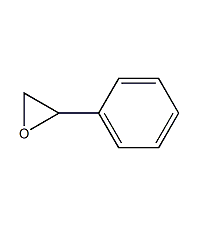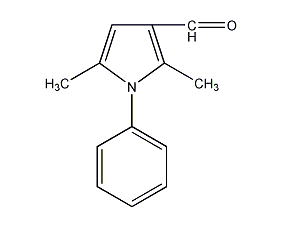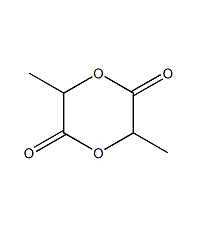![Dibenzo[a,h]anthracene structural formula](http://www.pucats.com/wp-content/uploads/2024/05/8a7fd8a08f314325aa0a1fe021ebd0e4.gif)
Structural formula
| Business number | 0161 |
|---|---|
| Molecular formula | C22H14 |
| Molecular weight | 278.35 |
| label |
dibenzotriphenyl, 1,2:5,6-Dibenzanthracene, 1,2:5,6-Dibenzanthracene, Aromatic hydrocarbons |
Numbering system
CAS number:53-70-3
MDL number:MFCD00003708
EINECS number:200-181-8
RTECS number:HN2625000
BRN number:1912416
PubChem ID:None
Physical property data
1. Properties: Flake and leaf-shaped crystals are obtained from acetic acid. The crystals are monoclinic or orthorhombic. sublimation.
2. Density (g/mL, 25/4℃): 1.232
3. Relative vapor density (g/mL, air=1): Undetermined
4. Melting point (ºC): 266~267
5. Boiling point (ºC, normal pressure): 524
6. Boiling point (ºC, 5.2kPa): Undetermined
7. Refractive index: Undetermined
8. Flash point (ºC): Undetermined
9. Specific rotation (º): [α] D18 +10.9° (C=0.4, in ethanol)
10. Autoignition point or ignition temperature (ºC): Undetermined
p>
11. Vapor pressure (kPa, 25ºC): Undetermined
12. Saturated vapor pressure (kPa, 60ºC): Undetermined
13. Heat of combustion (KJ /mol): Undetermined
14. Critical temperature (ºC): Undetermined
15. Critical pressure (KPa): Undetermined
16. Oil and water Log value of (octanol/water) partition coefficient: Undetermined
17. Explosion upper limit (%, V/V): Undetermined
18. Explosion lower limit (%, V /V): Undetermined
19. Solubility: Soluble in petroleum ether, acetone, acetic acid, benzene, toluene, xylene and oils, slightly soluble in ethanol and ether, insoluble in water.
Toxicological data
None
Ecological data
None
Molecular structure data
1. Molar refractive index: 97.62
2. Molar volume (cm3/mol): 225.8
3. Isotonic specific volume (90.2K ): 622.6
4. Surface tension (dyne/cm): 57.7
5. Dielectric constant (F/m): 3.36
6. Extreme Chemical rate (10-24cm3): 38.70
Compute chemical data
1. Reference value for hydrophobic parameter calculation (XlogP): None
2. Number of hydrogen bond donors: 0
3. Number of hydrogen bond acceptors: 0
4. Number of rotatable chemical bonds: 0
5. Number of tautomers: None
6. Topological molecule polar surface area 0
7. Number of heavy atoms: 22
8. Surface charge: 0
9. Complexity: 361
p>
10. Number of isotope atoms: 0
11. Number of determined atomic stereocenters: 0
12. Number of uncertain atomic stereocenters: 0
13. Determine the number of stereocenters of chemical bonds: 0
14. Uncertain number of stereocenters of chemical bonds: 0
15. Number of covalent bond units: 1
Properties and stability
1. Exist in mainstream smoke.
2. IARC carcinogenicity assessment: sufficient evidence.
Storage method
This product should be sealed and stored in a cool place.
Synthesis method
It is prepared using methyldinaphthyl ketone as raw material.
Purpose
For biochemical research. Carcinogens.
extended-reading:https://www.cyclohexylamine.net/cas-27253-29-8-neodecanoic-acid-zincsalt/extended-reading:https://www.cyclohexylamine.net/dibutyltin-oxide-cas-818-08-6/extended-reading:https://www.bdmaee.net/jeffcat-dmea-catalyst-cas107-15-3-huntsman/extended-reading:https://www.bdmaee.net/dabco-2039-catalyst-2039-dabco-2039-catalyst/extended-reading:https://www.newtopchem.com/archives/39817extended-reading:https://www.bdmaee.net/cas-1118-46-3/extended-reading:https://www.newtopchem.com/archives/40243extended-reading:https://www.bdmaee.net/high-efficiency-reactive-foaming-catalyst/extended-reading:https://www.newtopchem.com/archives/1155extended-reading:https://www.newtopchem.com/archives/45523



![1-Methyl-4-(2-methyloxiranyl)-7-oxabicyclo[4.1.0]heptane](http://www.pucats.com/wp-content/uploads/2024/05/3c9ff27de699444f904f4d7011a9e99b.gif)





